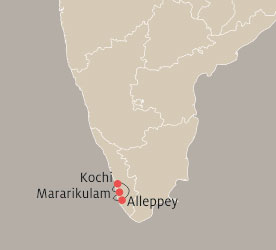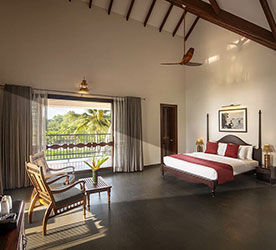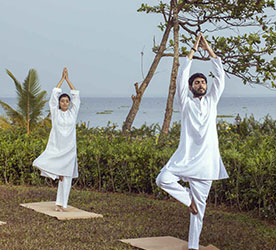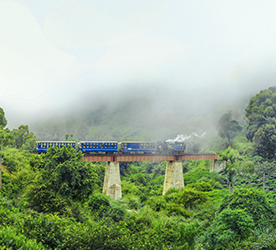
MONTHLY MUSINGS

Monsoon in India is more than just hard science and a meteorological event. It touches just about every aspect of India - history, religion, culture, agriculture, politics, education, business, and anything else humanly imaginable. The tell-tale signs of the monsoon are very interesting. The delicious summer mangoes from Lucknow, southeast of New Delhi, are not so tart anymore. The large black ants masses over the scorched earth, frantic in their search for food. The late afternoon sky turns yellow. A locust-type insect swarms over light fixtures which can be particularly annoying during dinner time. The fireflies are out in hordes in the evening. The midnight heavens thunder with pre-monsoon showers, accompanied by an orchestra of croaking frogs believed in India to have a sixth sense for detecting impending rains.
For the one billion-strong population of India, the monsoon is the most important time of the year. The farm sector employs over half of the total population of India, and for the farmers, the arrival of the monsoon is like finding a river after crossing a desert. India gets around 70 percent of its annual rainfall during the monsoon season. A good spell of monsoon is critical for some key summer crops such as rice, pulses, oilseeds, and soyabeans which account for 50% of India’s total food output. A delayed or below-normal monsoon can lead to supply issues, accelerate food inflation, and even a drought-like situation affecting the lives of millions in the most adverse way. An interesting, but bizarre, ancient ritual to appease the rain god for a good monsoon is the marriage ceremony of frogs. And mind you, these marriages are quite like any other marriages in India where the ‘groom’ comes to the ‘bride’s’ house with his 'friends' and 'family' dancing to the tunes of popular Bollywood songs.
But the monsoon is also a time of loss and despair. For the people of Majuli, Asia’s largest freshwater River Island located in Assam, the annual floods during the monsoon cause extensive damage to life and property. Tens of thousands of people are rendered homeless. But none of these troubles take away from India's romance with the monsoon, an association so ancient that people have found ways and means to heal themselves. During the full moon of Kartik (November) the various stages of Majuli celebrate the life and times of the Hindu God Krishna in all-night live performances that last for 3 days. The Raas festival was started some 300 years ago to inspire the people of Majuli to forget the pain of loss during the monsoon and celebrate again.
The monsoon is the inspiration behind half of India's literature, poetry, art, and melodies. It is a celebration of the creative force of Mother Nature. In the Nilachal Hills of Guwahati in Northeast India, devotees during the onset of the monsoon, celebrate the mensuration of Kamakhya, an ancient tantric Goddess. The Warli tribe of Maharashtra makes their pointillistic rain sketches. The merchant elite of Varanasi, back in the day, used to organise monsoon stag parties near waterfalls and ponds. The best songstresses of the land, drenched in the rain, would sing Raag Malhar (an ancient classical melody inspired by the monsoon) accompanied by thunder and lightning. They would be elegantly seated on wooden swings tied to mango trees with the heady smell of ripe mangoes and the wet earth permeating the air. And food during the monsoon!! The seasonal staples and the regional flourishes from across India - from foraged food to dried fish and prawns- are not only mind-boggling in their variety but are a lot more delicious than the masala chai and pakora, India's most famous rainy-day fix and her gift to the world.
Sawan Ko Aane Do (Let the Monsoon Arrive)
WHERE TO STAY

Raffles, Udaipur, Rajasthan
Raffles Udaipur is the first Raffles for India and a truly palatial hotel occupying a 21-acre private island in the middle of picturesque Udai Sagar Lake. With spectacular vistas of the lake, hillside and the neighbouring 400-year-old temple, the hotel offers a unique experience of staying on an island in the Udai Sagar lake. The 101 lake facing rooms and suites are adorned by hand-painted frescos and Rajasthani in-lay work furniture to promote the local art. This resort is easily accessible from the main sites of Udaipur and has a driving distance of 20 minutes from the airport, followed by a short boat ride. The resort includes Raffles’ Signatures such as a 1,100 square meter Raffles Spa, Long Bar, and Writers Bar along with a rooftop restaurant and an all-day dining restaurant, a swimming pool, and deck.
Weaving it into an itinerary
Routing: Delhi – Agra – Jaipur – Jodhpur – Udaipur - Delhi



Niraamaya Private Residence - Blue Mountain, Chikmagalur, Karnataka
Spread over an area of 2000 acres of coffee estate that was founded in 1865, this luxurious colonial villa is perched on the mountain top of Western Ghats. It is a pleasant four and a half-hour drive from Bangalore and 30 km north of the main town of Chikmagalur. The residence, that has sixteen suites on offer, features three bedrooms, a dining space, a living room, and panoramic mountain views. Guests can learn about as well as sample authentic cuisine, go bird watching, and hike through the misty Ghats.
Weaving it into an itinerary
Routing: Bangalore – Mysore – Chikmagalur – Hampi – Goa


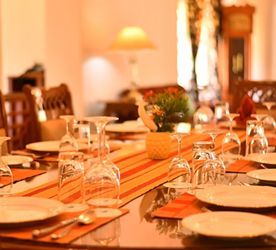
Amal Tamara, Alleppey, Kerala
Set by the Vembanad Lake in Alleppey, Amal Tamara revolves around the unique concept of “Chikitsa Chatushpasa” – a tenet of Ayurveda that centres healing in the synergy of four forces: physician, patient, therapist, and medicine. Each guest receives a tailored programme based on the ancient wisdom of Ayurveda, which is meticulously curated to offer solitude, tranquillity, and authenticity for a truly transforming experience. With a seven-day minimum stay, this wellness retreat provides three kinds of thoughtful accommodation options to choose from. At Amal Tamara, there are no predetermined menus; the food is prepared as per the prescribed programme of each guest, which is based on Ayurvedic principles. Sea salt, preservatives, refined flour, and sugar are also absent from the menu. Learn to prepare your food at the culinary sessions, and make your own medicines and herbal concoctions at the Kashayapura workshop.
Weaving it into an itinerary
Routing: Kochi – Alleppey – Mararikulam - Kochi
